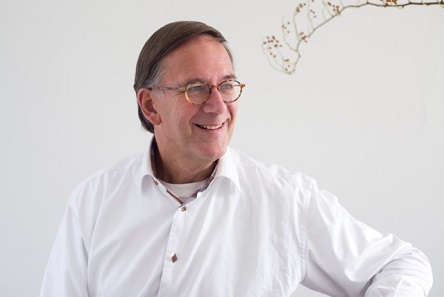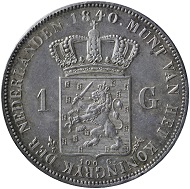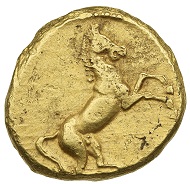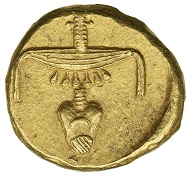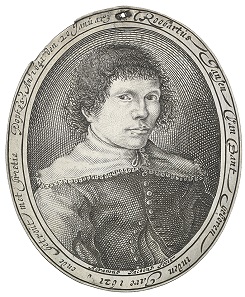March 2, 2017 – Housing more than 400,000 items, the National Numismatic Collection (NNC) is the Netherlands’ largest collection of banknotes, coins, medals, and related items. In the following you can read an interview Ursula Kampmann conducted with Ewout van Haeften, who is responsible for the Dutch National Numismatic Collection.
Manager of the NNC, Ewout van Haeften.
CW: Could you describe the present situation concerning the National Numismatic Collection?
EvH: By Royal Decree of December 2013, the Dutch central bank (De Nederlandsche Bank or DNB) became responsible for what we now call the National Numismatic Collection. The collection, which consists over 400.000 items including banknotes (and other paper money), coins, medals, related items (including non-western means of payment) and a comprehensive library of books and magazines, is part of the Dutch cultural heritage. The ownership of most of the collection is in the hands of the State. For the majority of the collection DNB acts just as a keeper.
DNB tries to manage the collection in an active way. There is an own staff of ten people (permanent and temporarily) who is working on the collection (improving the registration and description in the database, storage condition etc.), on the visibility (loans to museums, digitalization) and on promoting the collection. We find ourselves in the lucky position that we can still enlarge the collection by buying interesting objects at auctions and of course by acquiring the new euro banknotes and coins.
The one guilder 1840, William II – one of the most expensive coins of the Dutch Kingdom. Photo: ©NNC.
CW: Would you like to summarize the developments that have led to this situation?
EvH: For a long period the Netherlands had three major numismatic collections: at the National Museum of Coins and Medals, at the Dutch Mint Museum and at DNB. The collections had a high degree of complementarity and a relative low overlap. Just before the new millennium it was decided to merge the three collections and create a Money- and Bankmuseum. The new museum which rented space in the premises of the Royal Dutch Mint opened its doors for the public in mid-2007. In spite of the efforts of the staff and the tens of millions of euro subsidy granted by the ministries of Culture, of Finance and by DNB, the Museum never completed the preparatory phase of its existence. Unfortunately in the autumn of 2013 the museum had to close its doors for the public.
Medallion of Honorius, Ravenna, AD 402-406, ex Velp hoard 1715. Photo: ©NNC.
CW: In which grade is the collection accessible to curators? To scholars who are working on topics in connection with Dutch monetary history? To the public?
EvH: The whole collection is accessible for the own staff of the NNC. The premises of DNB does not make it possible to make the collection visible for the public on a permanent basis. However if we receive requests from scholars for serious studies, we will consider, on a case by case basis, to make an exception although the security regulations for accompanying visitors are time consuming.
A ‘roodborstje’ (a robin), nickname for the first banknote in the Netherlands. Photo: ©NNC.
CW: How then do you want to improve the visibility of the collection?
EvH: Let be very clear, and in this the State and DNB are on the same click, visibility of the collection and its objects is of paramount importance. We are not responsible for the collection to let it breathe in dust.
To improve the visibility of the collection we use two spearheads. First of all, and right from the start we have a generous policy to give objects on loan to museums located in or outside the Netherlands. Of course safety and security are of essence but we do not ask any fee. One of the other instruments we are using nowadays is the digitalization of all the objects of the NNC. It is a huge project which will go on for many years.
It is good to realize that in the former Money and Bankmuseum – as in most other museums – only a few percent of the collection was on exhibition and then it was only visible during the opening hours of the museum. With the digitalization project and via the internet we will make almost the whole collection visible, around the clock and from the persons own location. On the screen the objects can be viewed much more in detail and more in peace and quiet then possible in a museum (people don’t have to queue) and people can even make a print out for further study.
Stater of pharaoh Nektanebo II, 360-343 BC. Photo: ©NNC.
CW: What do you plan to improve the accessibility of the collection? Are there any thoughts of including the collection into another museum to display again some spectacular objects?
EvH: Indeed the accessibility if one of our concerns and I certainly will not exclude any ‘improvement’. But opening an own museum seems not realistic It will be extremely costly, money which can better be used for the collection itself. As I mentioned in the answer on your last question, given objects on loan is one of our instruments. We do this for temporary exhibitions but in some cases we also give long-term loans where the objects can be seen in semi-permanent exhibitions. With some of the Dutch museums we entered into very good relationship where the NNC can deliver the objects, and accompanying texts and where the museums have beautiful objects on display.
Medal with portrait of Roobertus Jansen van Bant, 1640, currently on long term loan to the Rijksmuseum Amsterdam. Photo: ©NNC.
CW: Are there any thoughts of selling the collection at a certain point?
EvH: To predict is difficult especially when it concerns the future. But as the NNC is a cultural heritage it seems highly unlikely that the State of the Netherlands will ever consider of selling their part of the collection. As in each collection, also in the NNC there is some noise which could result in selling some individual objects.
CW: Tell us more about your plans concerning the website publishing the National Numismatic Collection.
EvH: For the moment as part of the website of DNB, but maybe in the near future with an own URL, the NNC has the possibility to publish information on the internet. Recently we introduced an English version of our website.
On the internet the numismatist can find two databases (for the moment only in Dutch). There is the collection database with the description of the items we have in the collection and in a growing number of cases – as result of the digitalization project – also with pictures of both sides. And there is the NUMIS database in which people can find information on numismatic founds in the Netherlands.
1.5 solidus of Valens, Trier, AD 367. Photo: ©NNC.
CW: Can you tell us more about this NUMIS?
EvH: DNB is not only responsible for the National Numismatic Collection but we became also the keeper of the Numismatic Information System (NUMIS). All finds in the Netherlands of numismatic items originating from before 1600 (in almost all cases these are coins) and all finds of numismatic hoards are registered in a database. There you can find a description of the items and the location where they are found (to protect the location against treasure diggers, in the public version the coordinates are rounded). For most of the recent founds there are also pictures available.
To access the website of the National Numismatic Collection, please click here.
In case of additional questions, you can contact Ewout van Haeften by email.
More background information on the situation of Dutch numismatics can be found in our MintWorld Compendium on “The Future of Money Museums”, which you can download for free at our site.




